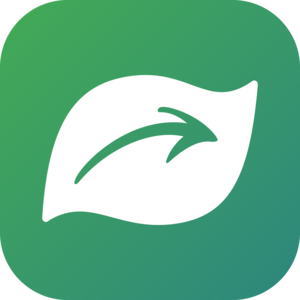A Conservationist in Ecuador Finds a Leafy Skinlichen! - Observation of the Week, 1/11/22

Our Observation of the Week is this Leafy Skinlichen (Leptogium phyllocarpum), seen in Ecuador by @angelmario!
Angel Mario Hulapa Erazo (below, in 1990) lives in the southern Ecuadorian town of Loja and says he’s always been interested in nature, but two seminal trips in his teen years, to the Cordillera del Condor and Podocarpus National Park, inspired him to take up a career in conservation - the field in which he’s spent the last 32 years of his life.
[In the] Cordillera del Condor…I met the Shuar (an amazonian indigenous group) and became impressed with their knowledge about the forest and everything connected to it. I was excited to see monkeys, jaguars, sahinos (wild pigs), snakes (boas, yamungas, equis, corals), toucans, cocks of the rock, yamalas, agoutis, poisonous frogs, alligators and others…
[and in the] Lagunas del Compadre protected area [of Podocarpus National Park], which included a strenuous hike for 14 km with limited mountain equipment, I managed to reach to this place for which I have a lot of respect due to the harshness of its conditions and its beauty where I was able to observe deer, spectacled bears, wolves, mountain tapir and jambato frog (Atelopus Podocarpus now extinct). Every time I was in nature, my interest and curiosity grew. It also allowed me to learn about the threats faced by ecosystems which motivated me to work on the conservation of natural resources and biodiversity.

At age 17, Angel and some of his friends founded a conservation NGO where he worked for 24 years, then he founded Grupo Green Jewel with Paola Rengel, for which he is the General Coordinator. The group focuses on environmental education in southern Ecuador and northern Peru and also works with iNat’s partner in Ecuador, INABIO, to promote iNaturalistEc, the City Nature Challenge, the Great Southern Bioblitz, and Bioblitz LatAm, among other initiatives.
As for the amazing lichen you see pictured above, Angel came across it while in the cloud forests of Yacuri National Park, supporting students working on a thesis project about frogs. “We had been enduring a very harsh climate for two days,” he recalls,
[and] the rain and the cold caused my camera to have problems - that is why I had to use my phone’s camera to take pictures. The third day the weather improved and in the trunks of the trees I could see this lichen (Leptogium phyllocarpum). Its pattern captivated me, since I had never seen it before. I think that if the weather had not changed and if I had not accepted the invitation of the students to accompany them to their field trip, now I would not be telling this story, for that reason, I firmly believe that nature has magic and connects us with the world.
Found in many parts of the world, leafy skinlichen is often found growing on bark (sometimes rocks) in drier areas. However, it’s known to swell quite a bit when wet, which you can see in Angel’s photo. The reddish areas of the lichen are its apothecia, or spore-bearing structures.
Angel (above, in 2020) has, for years, taken nature photos but tells me
I always thought that having them on a hard drive or computer was useless. And although some of these photographs I used for guides, manuals, presentations, posters, folders and videos, I was still frustrated about not being able to share them with more people. With social networks I found a window to share my photos and that made me feel a little better, but something was missing, the science was missing on platforms Facebook and Twitter.
At the urging of an English friend and conservationist he joined iNat in 2019 but didn’t use it much until he was invited to the launch of iNaturalistEc. At that presentation, “I saw many of the uses and I said to myself, ‘this is the tool I have been looking for.’” He and others with Grupo Green Jewel have been teaching park rangers, students, technicians, and others how to use iNat, and this year “we are going to launch the ‘Bichos Loxa’ initiative to encourage walking and recording biodiversity in the iNaturalistEc of parks, trails and natural areas, aimed at children, youth and adults who love biodiversity and adventure...
iNaturalist changed the way I interact with biodiversity and the environment. I am more observant of details,I’ve been able to discover introduced species, threatened and endangered species, and species potentially new to science or the region. This knowledge has allowed us to generate more knowledge to share with our colleagues, with our talks and conversations with various local groups. In addition, we believe that the information will help local governments in their territorial planning, especially in the creation of new protected areas. This year, we are going to take small photographic guides of local biodiversity derived from information on iNaturalist in order to share with the public in our environmental education program Biodiversity of Southern Ecuador to raise awareness and strengthen the environmental consciousness of the local community.
iNaturalist has become part of our daily lives…[and] I believe that the time we spend entering observations and helping with identifications is a great contribution to the knowledge of biodiversity. Personally I consider myself an iNaturalist that’s why I use the hashtag #SomosInaturalistEc and for this year we will also use #SoyInaturalistEc.
(Quotes translated from Spanish by Scott Loarie, and have been edited for clarity.)
- Check out Grupo Green Jewel on Twitter, Instagram and Facebook.
- Lichens are awesome! Check out the most-faved lichen observations on iNat here.
- This is a pretty good lichen video explainer.
- Angel’s leafy skinlichen was originally identified by @kai_schablewski - check out our Identifier Profile about him!











